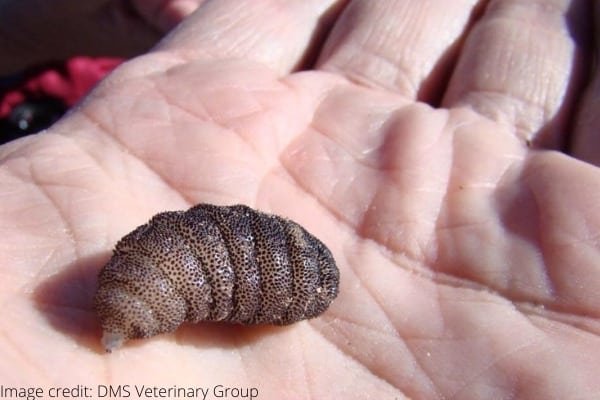
Identifying a wolf worm issue isn’t as straightforward as it sounds. These worms can burrow into your pet’s skin, often going unnoticed until the symptoms become severe. Let me explain how to recognize the signs and what to do if you suspect your furry friend is dealing with these unwanted guests.
What are Wolf Worms?
Wolf worms, or *Cuterebra*, are a type of botfly that primarily targets mammals, especially outdoor pets. These parasites lay their eggs in the environment, typically in areas where animals might hang out, like grassy fields or wooded areas. The larvae then attach themselves to a host, causing potential harm. Think of them as uninvited guests that settle in and refuse to leave.
When wolf worms infiltrate your pet, they can lead to significant health issues. The larvae go through a unique lifecycle, starting as eggs and growing into worms that burrow into the skin. This means they can be particularly sneaky, hiding out until they’re ready to make their presence known.
Recognizing the Symptoms of Infestation
You might be wondering, “How will I know if my pet has a wolf worm infestation?” Here are some signs to watch for:
- Swelling or lumps: If you notice any unusual lumps on your pet’s body, especially around the head, neck, or underbelly, it could be a sign of wolf worm larvae.
- Itching or discomfort: Your pet may scratch or bite at the infected area, trying to relieve the irritation caused by the larvae.
- Foul odor: An infected area may emit a foul smell, which can be another red flag.
- Behavioral changes: If your lively pet becomes lethargic or less interested in play, take note. This can be a symptom of discomfort or pain.
If you spot any of these signs, it’s important to act quickly. Delaying treatment can lead to more severe infections and complications.
How Wolf Worms Invade Your Pet
So, how do these pesky worms find their way into your pet? The lifecycle of wolf worms is pretty fascinating—and a bit gross. It starts when adult female botflies lay their eggs near animal trails, in grass, or around burrows. When a pet brushes against these areas, the heat from their body can trigger the eggs to hatch.
The larvae then latch onto your pet’s skin and burrow in, leading to potential health risks. It’s like a hidden parasite, slowly creating a home in your furry friend. This process can happen without you even noticing, making it even more important to keep an eye on your pet, especially if they spend a lot of time outdoors.
Preventing Wolf Worm Infestation
Prevention is always easier than dealing with a full-blown infestation. Here are some practical steps to help keep your pet safe:
- Regular checks: After outdoor adventures, inspect your pet’s skin for any unusual lumps or signs of irritation.
- Grooming: Regular grooming can help you spot any issues before they escalate. Plus, it’s a great way to bond with your pet.
- Limit exposure: Try to keep your pets away from areas where wolf worms are likely to be found, such as tall grass or burrowing animal habitats.
- Consult your vet: Your veterinarian can provide advice on preventive measures and can recommend treatments, like topical insecticides if needed.
Taking these steps not only protects your pet from wolf worms but can also help them avoid other parasites and health issues.
Treating Wolf Worm Infestation
If you find out that your pet has a wolf worm infestation, don’t panic—it’s treatable! Here’s what you should do:
1. **Visit the vet:** Schedule an appointment as soon as possible. The vet can diagnose the infestation and confirm that it’s indeed wolf worms.
2. **Removal procedure:** Your veterinarian will likely need to remove the larvae. This can involve a simple extraction process where they’ll gently remove the worm from your pet’s skin.
3. **Post-treatment care:** After removal, your vet may recommend medications or topical treatments to prevent infection and reduce inflammation in the area.
It’s essential to follow your vet’s instructions closely. Keeping your pet’s recovery path smooth can ensure they’re back to their playful selves in no time.
Dealing with wolf worm infestation isn’t something any pet owner wants to face, but being informed can make all the difference. By knowing the signs, understanding how these worms operate, and taking proactive steps to prevent infestations, you can help keep your furry friends healthy and happy.
Remember, regular check-ups with a veterinarian are vital. They can offer advice tailored to your pet’s unique needs and lifestyle. So, keep an eye on those playful pups or curious kitties—their health is worth it!
